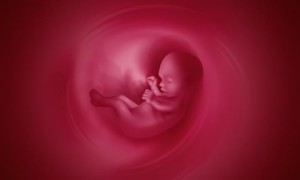Placenta previa is a implantation of placenta over cervical os where bleeding from or into the genital tract after the 28th week of gestation but before birth of the baby. A low implantation of the placenta in the uterus causing it to lie alongside or in front of the presenting part. When the placenta is implanted partially or completely over the lower uterine segment it is called placenta previa.
 Placenta pervia causes are placental bleeding, extra placental causes. The exact etiology is unknown, but the conditions are multifactorial by risk factors are advanced maternal age, infertility treatment, short interpregancy interval, multiple gestation, uterine injury and recurrent abortions.
Placenta pervia causes are placental bleeding, extra placental causes. The exact etiology is unknown, but the conditions are multifactorial by risk factors are advanced maternal age, infertility treatment, short interpregancy interval, multiple gestation, uterine injury and recurrent abortions.
The degrees or types of placenta pervia are (i) low lying type which is positioned at the edge of the cervix ii) marginal type where placenta begins to grow at the bottom of the uterus (iii) partial or incomplete which covers the opening of the cervix and (iv) complete which is serious type where placenta will eventually cover the entire cervix.
The clinical features of placenta pervia are:
(i) Painless vaginal bleeding,
(ii) Bleeding is usually bright red
(iii) Bleeding may be scant at first and then become more profuse.
(iv)The woman may awaken in the middle of the night to find herself in a pool of blood.
(v) Uterine contraction
Factors that determine the persistence of placenta pervia are time of diagnosis or onset of symptoms and localization of placenta pervia which is nothing but placentography by using sonography, MRI.
Prevention of placenta pervia by ample antenatal care, Antenatal diagnosis of low lying placenta at 20 weeks, repeat ultra sound examination at 34 weeks, “warning hemorrhage” should not be ignored and Family planning and limitation of births reduce the incidence of placenta pervia.
The complications are premature baby, malpresentation, Antepartum haemorrhage (APH) varying degree of shock and fetal complication i.e., low baby weight. It affects about 1 in 200 pregnant women in the third semester of pregnancy.
